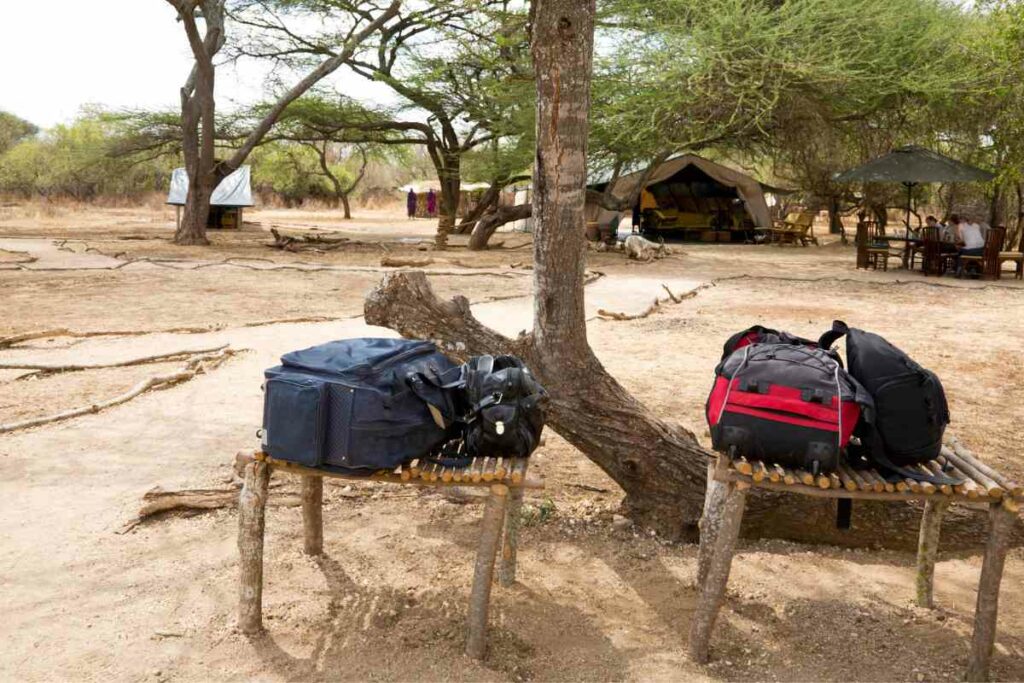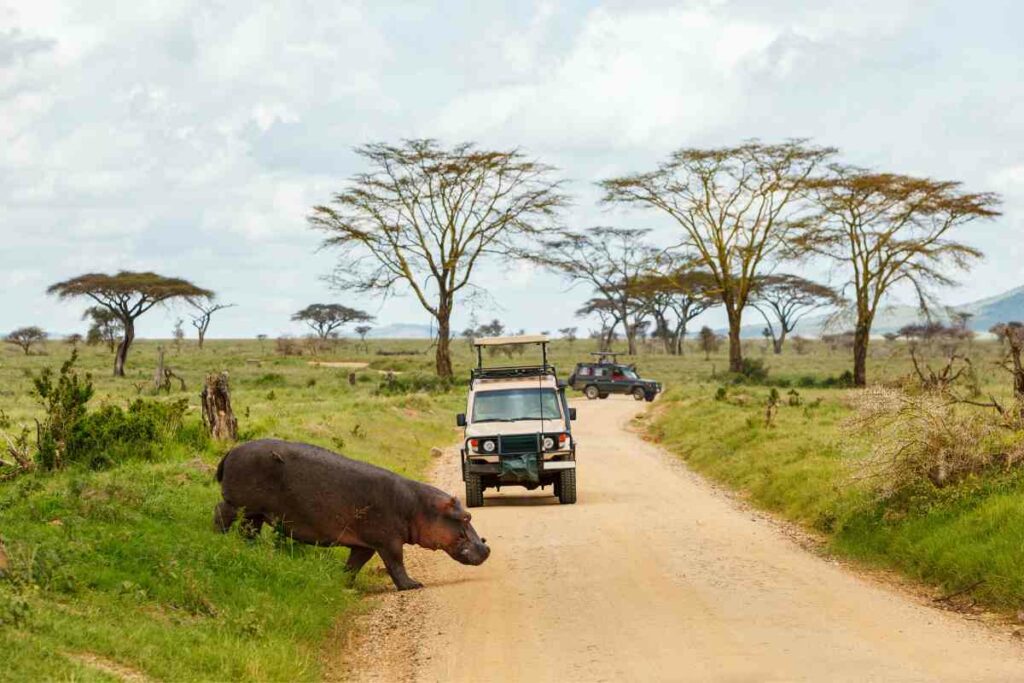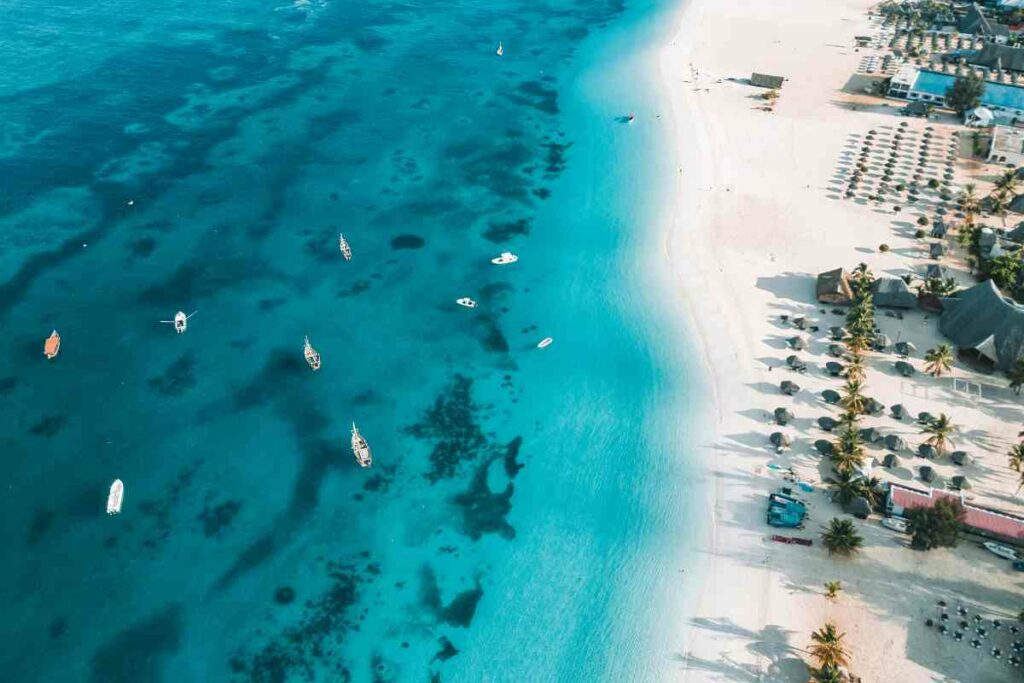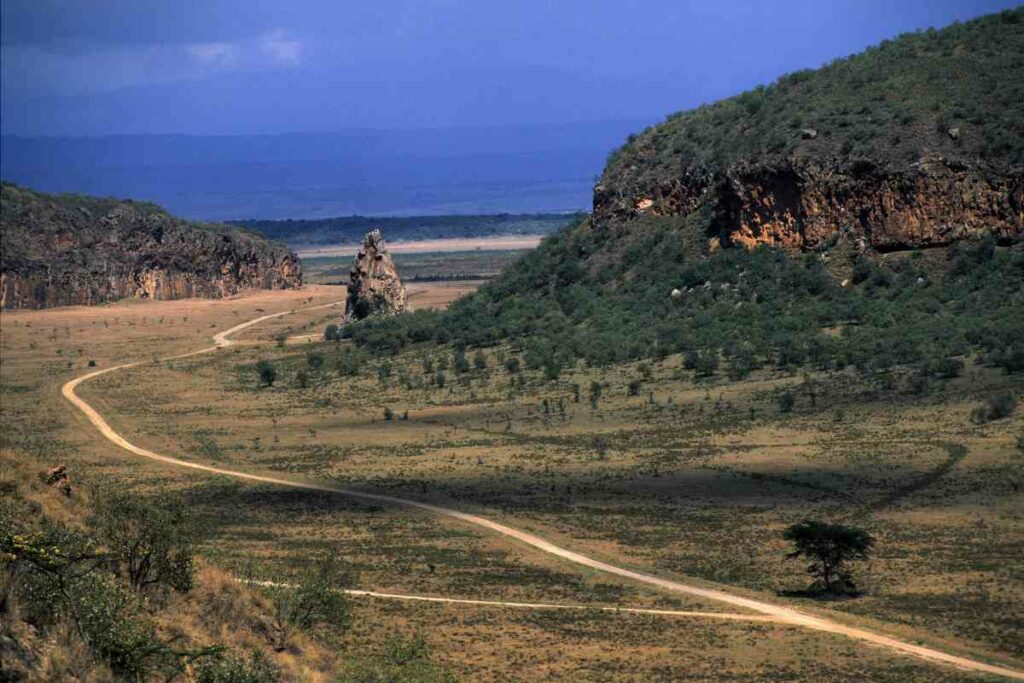Africa boasts some of the greatest animal migrations on the planet.
Unfortunately, many people only think of the famous great wildebeest migration through Tanzania and Kenya when animal migration in Africa discussion comes up.
Few know about other massive animal migrations on land, sea, and air.
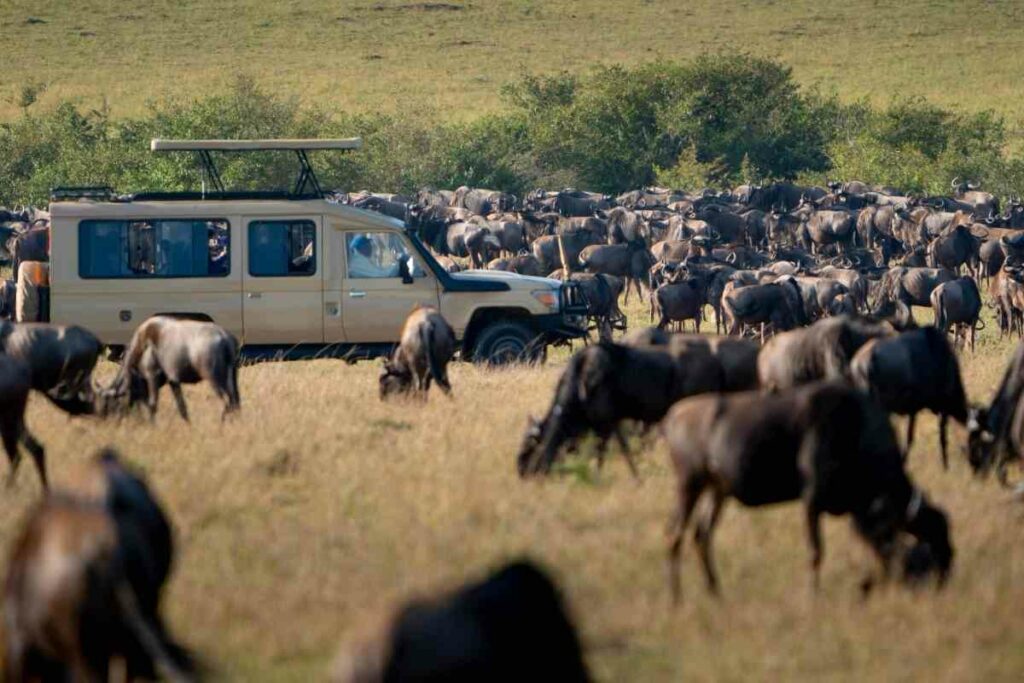
Besides the popular wildebeest migration, this post explores other great animal migrations in Africa that will interest any nature lover.
Southern Right Whale Migration in South Africa
Whale watching in South Africa occurs between June and November every year.
Southern Right Whales move from their feeding grounds in Antarctic waters to the shallow and sandy waters of Hermanus and Cape Town to mate.
Gestation in these whales takes about one year before giving birth to a single calf. Their young ones weigh about 1 ton at birth.
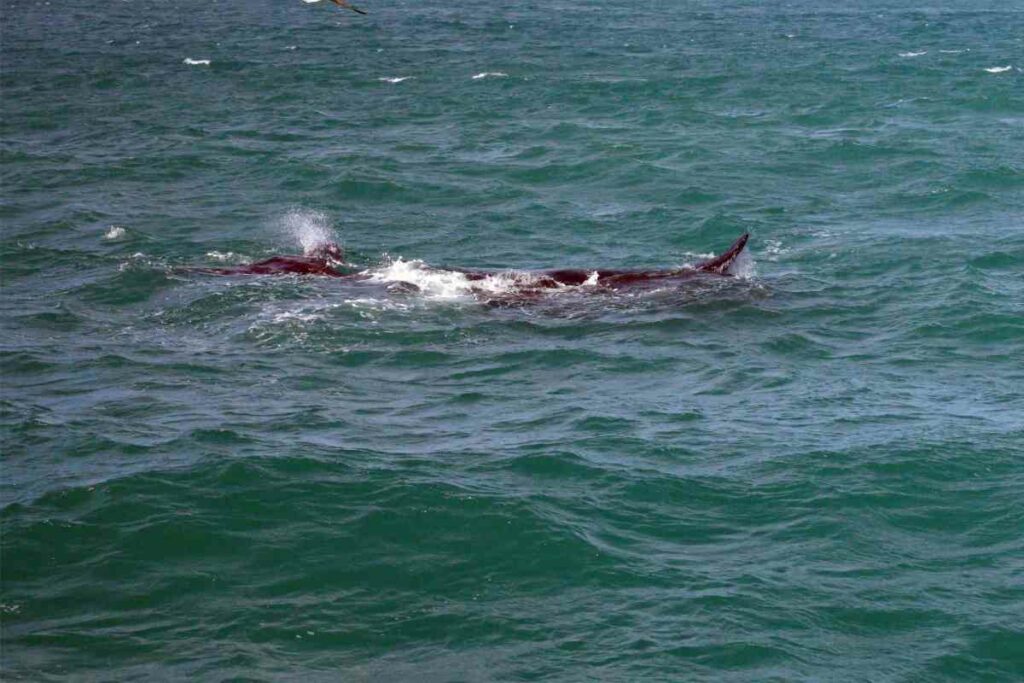
They spend their early days on the shallow bays of the waters, playing cheerfully and occasionally displaying their flukes to wow onlookers.
Hermanus ranks among the best land-based whale-watching spots worldwide.
It’s a seaside town that offers visitors a clear view of these friendly and harmless marine mammals weighing up to 500kgs.
Hermanus is a 72-mile drive from Cape town.
The town hosts a week-long art display and festival around September to attract and entertain visitors from around the globe to the whale bonanza.
Cape Town’s city is packed with activities during this season, and local businesses thrive.
Around November – These giants, which grow up to 15 meters, take a 5,000-kilometer journey back to the deeps of the icy Antarctic.
Carmine Bee-Eater Migration in Namibia
The Carmine bee-eater is a migratory bird whose diet is primarily bees but also feeds on other flying insects.
The bee-eater is a mix of vibrant pinking and turquoise blueish plumage that makes it eye candy to many birdwatchers.
Their feet are primarily brown or black and weigh approximately 59g.
These birds mostly spend summer in South Africa, in the woodlands of Savannah, and flock to River Zambezi, Zambia, around August.
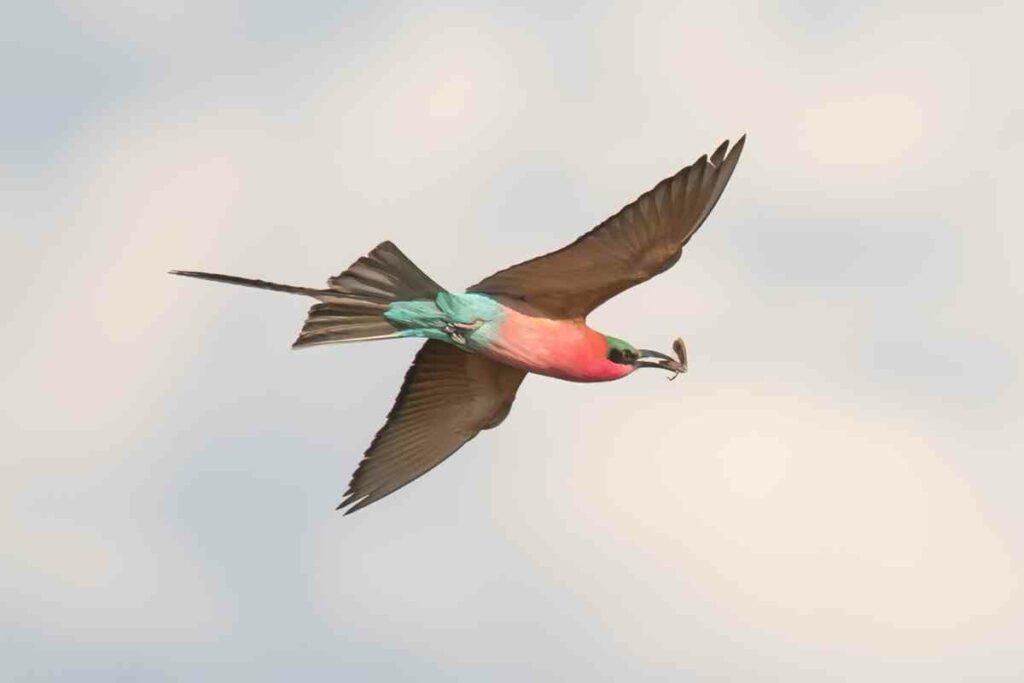
Upon arrival, they group to feed until late September, when they start pairing up to mate.
Carmine bee-eaters build their nests near fallen trees at the water banks and in sandy burrows along the river. They’ll always flee as a group when threatened by predators.
Carmines have a loud chirp, and you’ll almost notice their presence more than a kilometer away.
Their extraordinary aerial acrobatics make them delightful to watch, even for the least enthusiastic birdwatcher.
These birds spend about three months at the banks of the river Zambezi, and by November, they’ve all flown back to their respective summer hunting grounds.
Fruit Bat Migration in Zambia
Fruit bat migration in Zambia is a yearly event between October and December.
Over 10 million straw-colored bats from Central Africa flock to Zambia’s less-known Kasanka National reserve.
They visit this place to feed on the wild fruits inside the swampy forest of the park.
Fruit bat migration to Kasanka, Zambia, is believed to be the largest mammal in the world.
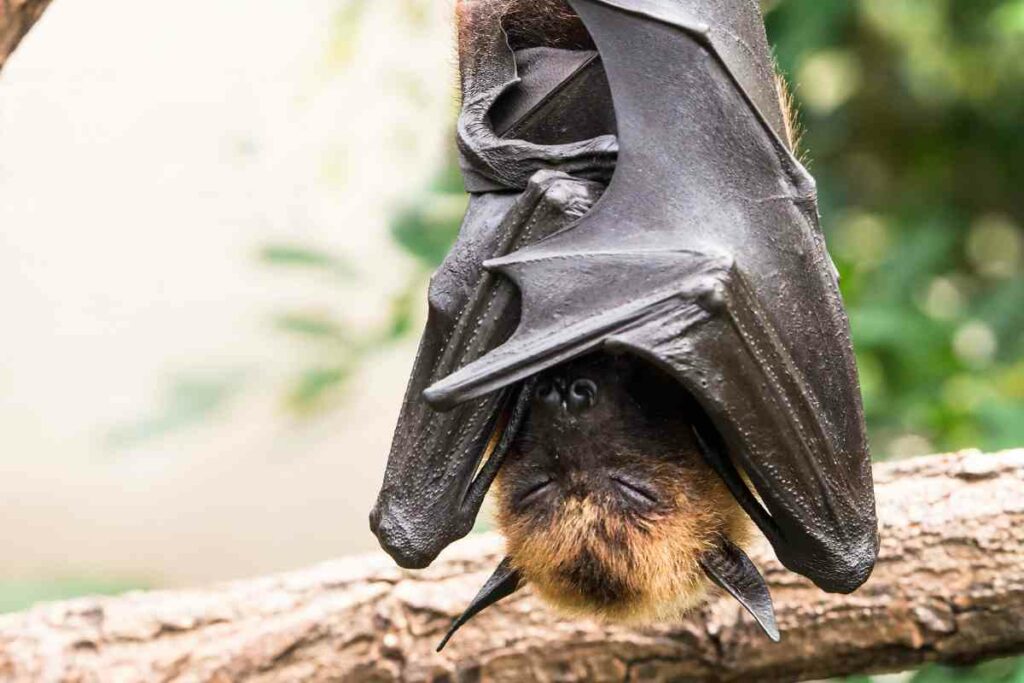
And while bat migration might not be on top of most tourists’ and nature lovers’ lists, those who visit the park marvel at the loud chatters and fluttering wings of millions of fox-faced bats descending on the swampy forest to feed on fruits.
The park has strategic custom-built hides and public viewing spots.
These spots give visitors a clear sunset view of bats leaving to look for food and, when they return in the morning to roost.
This goes on for approximately three months, and all the bats are gone by the end of December.
It’s unclear where the bats retreat to, but they are generally known to spend most of their time in caves, old buildings, and under long bridges.
Sardine Run in South Africa
The Sardine Run along SouthAfricas’ east coast is a spectacular marine event that dates back to as early as 1853.
It was a traditional event where local fishermen harvested a lot of fish arriving from Port St Johns and Mbyoti between June and July.
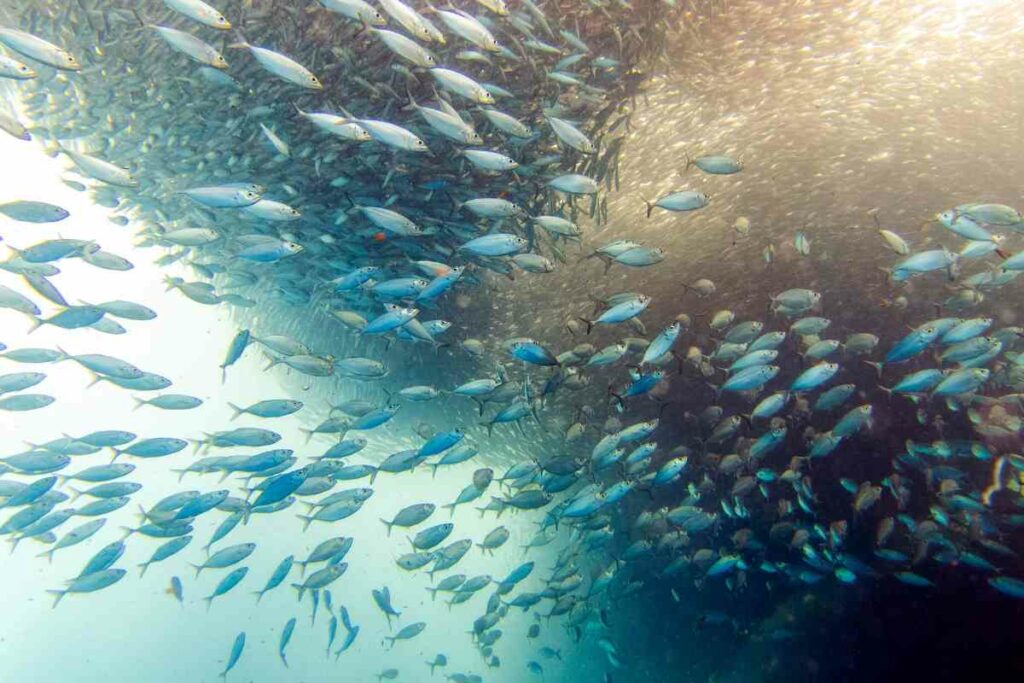
Another arrival of these small fish was witnessed between May and June—this time from East London and Port Elizabeth.
Sardine migration to warm KwaZulu waters in Natal’s South Coast from the Eastern Cape coastline is the largest animal migration on the planet.
Farmers would wait to harvest these small, nutritious fish according to their preferred seasons.
During this mass movement of Sardine, other oceanic life that feeds on them also emerges from their hiding.
What to Expect? You’ll see dolphins, sea birds, sharks, whales, and game fish coming out in big numbers to take advantage of this occasional treat.
For a better Sardine Run experience, you may need to travel on a boat or other water vessels with experienced guides.
Zebra Migration in Botswana
Zebra migration in Botswana is still a less-known natural phenomenon.
For many years, there was no clear documentation of Zebra migration.
However, in 2012, researchers tracked thousands of plain zebras traveling about 600 miles from Nxai pan to Chobe river in a circuit.
This later became the famous Nxai Pan Zebra migration, now Africa’s longest terrestrial wildlife migration.
Another discovery of zebra migration was in 2013 from the Okavango Delta to Makgadikgadi Pans National Park.
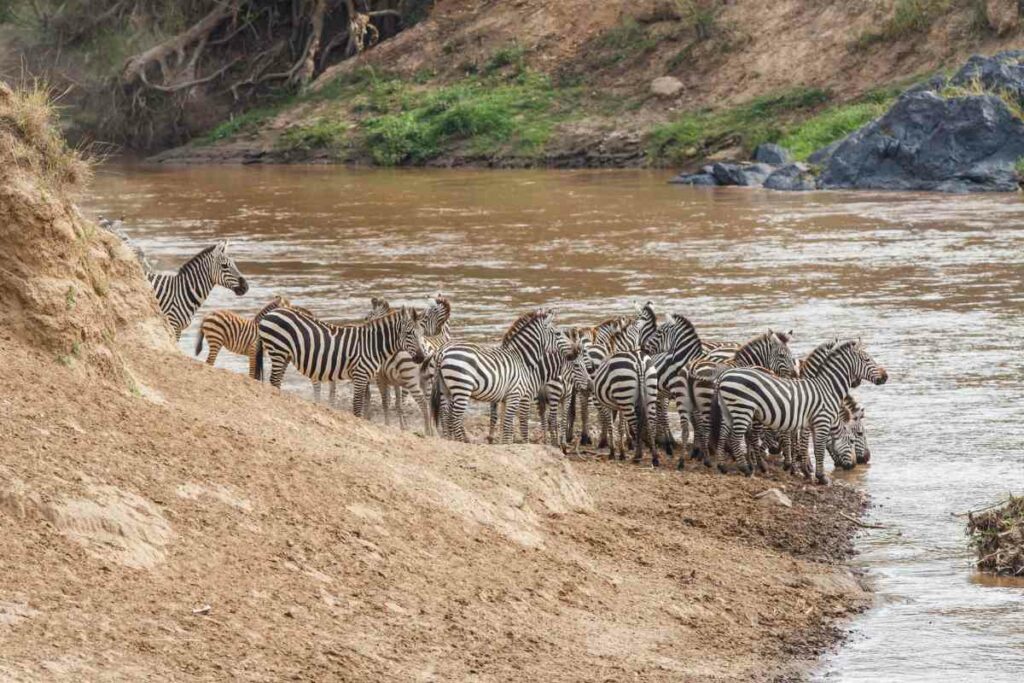
This movement is now the Okavango Delta to Makgadikgadi Pans movement.
The two distinctions still exist in Botswana. Each zebra group migrates separately during summer rains to search for greener pastures.
The Nxai Pan Zebra migration begins in early December.
During the period, plain zebras from Chobe National Park move south of Nxai Pan National Park.
The park receives plenty of rainfall, thus a lot of nutritious grazing pasture for the zebra. They remain there for about three months before moving back to Chobe in March.
The Okavango Delta to Makgadikgadi Pans movement also happens around the same period.
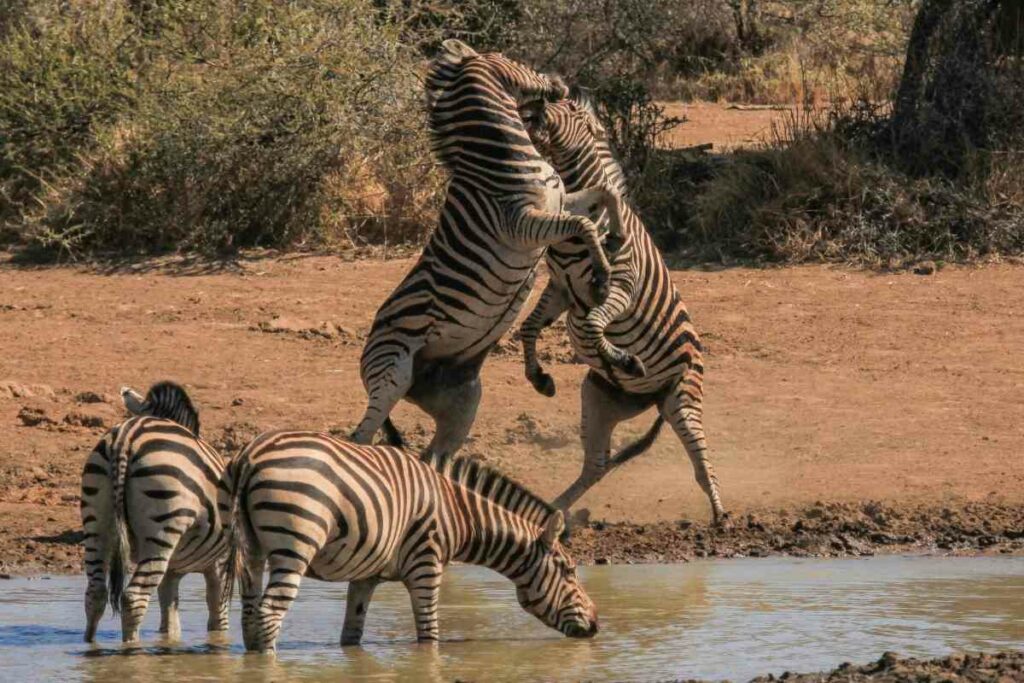
This second group of zebras moves to Makgadikgadi after spending summer near the Boteti river, south of Okavango.
Like the first group, their mass migration is also triggered by heavy rains in Makgadikgadi.
However, only a small percentage of this second group migrate to search for nutritious pastures in Makgadikgadi.
Close to half of the population are permanent residents of Boteti.
Visitors and nature lovers camp around Nxai Pan and Makgadikgadi Pans for a clear view of the mass arrival of zebras in these locations to look for food.
Flamingo Migration in Kenya
The Great Rift Valley in Kenya is the pride of East Africa’s birdlife.
Between April and June, millions of flamingos from neighboring countries fly into the warm lakes of Bogoria and Nakuru in search of rich food sources.
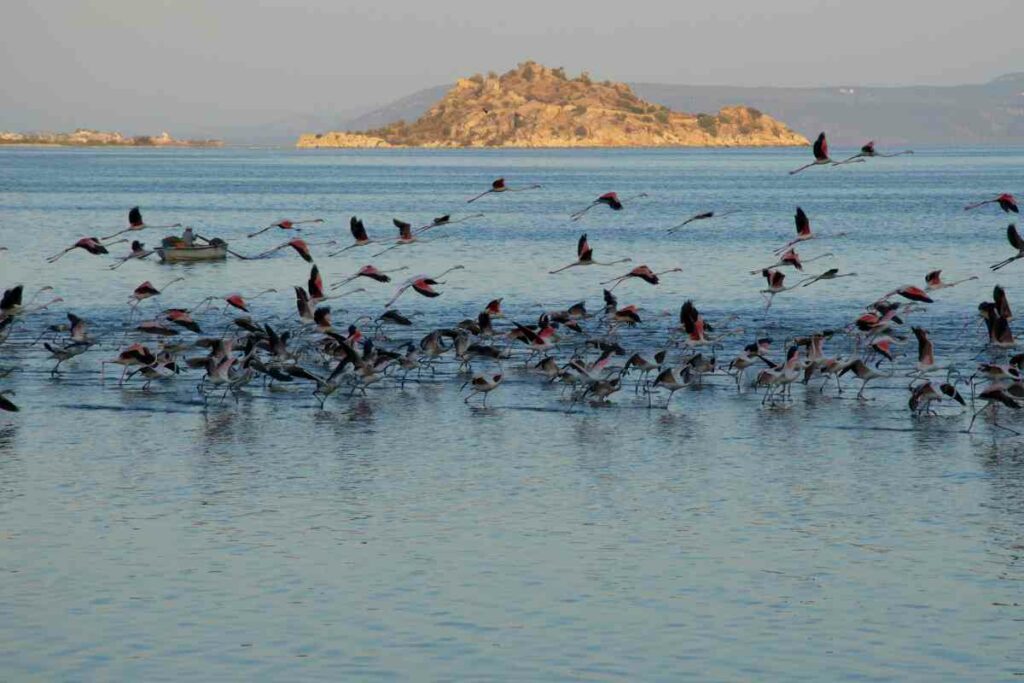
Birdwatchers enjoy watching flamingos fly toward their feeding destinations in fashionable “V” formations.
As they fly, these long-legged birds paint beautiful imagery of the yellow biplane flying over a flamboyance in the famous “Out of Africa” movie.
Due to Their Diet – The lake Bogoria and Nakuru flamingos are believed to assume their bright and colorful pinkish look. These flamingos feed mostly on insect larvae and algae in the alkaline soda lakes.
Flamingos also love these lakes due to the shallow areas that allow them to wade through easily while searching for food.
Rising waters drove them away at some point due to heavy rains before returning in 2020, when water levels dropped and water alkalinity increased.
The Best Way to Experience the Great Animal Migration in Africa
The great animal migration in Africa offers one of the most epic nature experiences for those who love the outdoors.
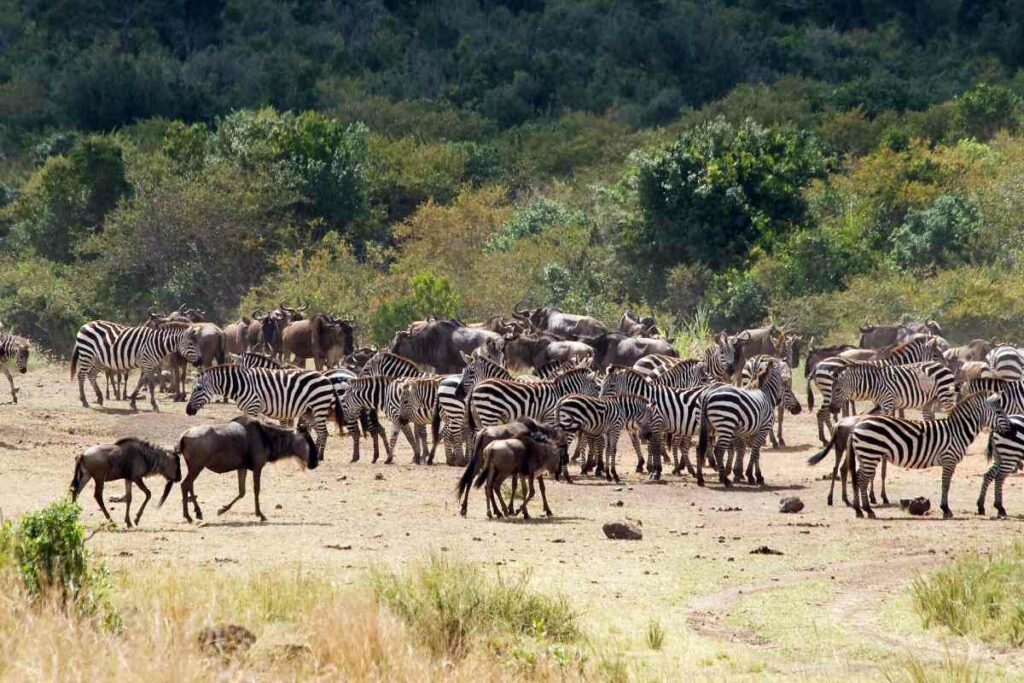
But you can make your safari more memorable with the following tips.
- Research the best safari guides before visiting. The guide you choose can dictate your experience and whether you’ll want to come again.
- Your safety comes first. Prepare for warm or cold weather, flies and mosquitoes, and windy or sunny days. Remain in the car and follow the rules to avoid falling prey to wild animals.
- Remain flexible and open-minded. Do not expect to experience everything precisely as you see them on the screens. Sometimes you may see less or a lot more than you’d expect.
- Ask questions and learn as much as you can about the animals. Do not be afraid to ask the guide or the driver to pause so you can take clear pictures.
- Take as many photos as possible when you spot an exciting animal you want to keep memories of. You never know whether you’ll meet them again during the safari.
Final Thoughts
Animal migrations in Africa offer one of the most iconic nature experiences on the continent.
Besides the thrill humans get from watching, migratory animals support life on earth.
These animals pollinate and distribute seeds for an efficient ecosystem structure and function.
It’s also a circular chain where animals provide food for each other for enhanced regulation of the number of particular species in the ecosystem.



